Deobandism: A Plant Sown by the British
I am often asked by friends why I oppose Deobandis so strongly. I tell them that I have read their books, in which their scholars have concealed the truth and misled people.
“An average Deobandi’s life is nothing but deceit.”
The British allocated the land, and Hindus provided the funds to establish the Deoband seminary in a region of India, marking the beginning of Deobandism. To spread this ideology among the Muslim community, hypocrisy was ingrained in its foundation. Hypocrisy is the essence of Deobandism. Where needed, they become Rafidi Shias; where needed, they become Sufis; where needed, they follow innovators; where needed, they align with Ahl al-Ra’y (those who rely on opinion) and Taqleed (blind following); and where needed, they adopt the path of the Muhaddithin (scholars of Hadith).
“Deobandis are like potatoes; just as potatoes fit into every dish, Deobandis fit into every sect.”
The primary reason for the spread of Deobandism in India is that its beliefs are ambiguous—neither its issues nor its Shariah are clear. Thus, they created a community that is directionless.
Deobandis often accuse Ahl-e-Hadith of being a product of the British era, claiming that no Ahl-e-Hadith existed before the British rule. I have already provided a detailed response to this. Here, I will show you that Deobandis, who falsely accuse Ahl-e-Hadith, are themselves a plant sown by the British in Bareilly. I will present all the evidence from Deobandi books, and my challenge is for any Deobandi to refute my post.
First, let’s see when the British took control of Bareilly. The Deobandi scholar, Amin Aqvi, writes:
“On September 19, 1857, the British captured Delhi.” According to Amin Aqvi, the British took control of Delhi on September 19, 1857. Approximately ten years after the British established their rule, they laid the foundation of Darul Uloom Deoband, marking the beginning of this new sect. Regarding this, Deobandi scholar Sarfaraz Khan Safdar writes:
“The foundation of Deoband was laid on 15 Muharram 1283 Hijri,” i.e., around 1866, about ten years after the British took control of India.
Deobandi scholar Mufti Muhammad Saeed Khan stated:
“The British government provided the necessary land for the construction of Darul Uloom Deoband. Not only that, but British officials were also involved in its establishment.”
(Mahina Safdar Gujarat, Issue 21, Pages 33-41)
This is clear evidence that Darul Uloom Deoband is a plant sown by the British in Bareilly. Before 1866, if anyone can show me a single Deobandi anywhere in the world, I will declare myself a Deobandi today. Now, they themselves are a product of the British era, yet they accuse Ahl-e-Hadith of the same.
Some Deobandis may argue that they are Hanafis and thus existed before the British era. But Barelvis are also Hanafis—did they exist before the British era?
Another proof that Deobandism is a British-planted ideology is that the books containing its beliefs were written after 1866. These books advocate for innovations and misguided beliefs, such as:
- The belief in receiving blessings from graves.
- The belief in interpreting Allah’s names and attributes (Ta’weel).
- The belief in supporting deviant groups like Ash’aris and Maturidis.
- The belief that the Prophet (peace be upon him) is alive in his grave in a worldly sense.
- Declaring Ahl-e-Tawheed as Khawarij and misguided.
- Making personal Taqleed (blind following) obligatory.
- Permitting the use of intermediaries after death.
The Deobandi sect was born in 1866 with the establishment of Darul Uloom Deoband. We prove this from the writings of Deobandi scholars themselves to establish the truth conclusively.
Deobandi scholar Qari Tayyib writes:
“The starting point of the Deobandi scholars is Darul Uloom Deoband. Its teachings and methods spread across India, and it became known as the Deobandi school of thought. Therefore, it is necessary to present the objectives of Darul Uloom, which were manifested through the actions of its founders and their companions, so that this ideology is understood not just theoretically but practically as well.”
(Maslak Ulama Deoband, Page 77)
In another place, Qari Tayyib writes:
“The Deobandi school of thought is not just a theoretical ideology but a practical call that began over 100 years ago and continues to this day.”
This admission by Deobandi scholars makes it clear that the Deobandi sect was born with Darul Uloom Deoband in 1866, and its call began 100 years ago and continues today. Before this, no Deobandi existed anywhere in the world, and the fact that books on Deobandi beliefs were written after 1866 proves that no one with Deobandi beliefs existed before that.
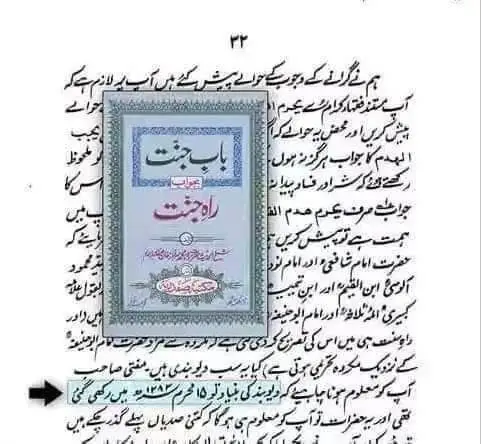
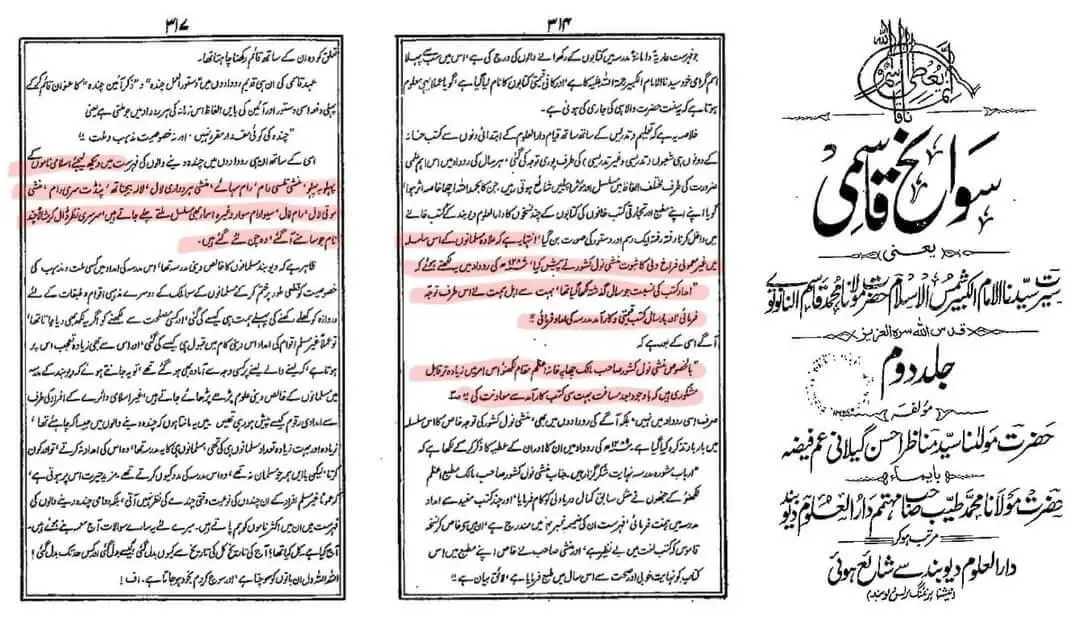
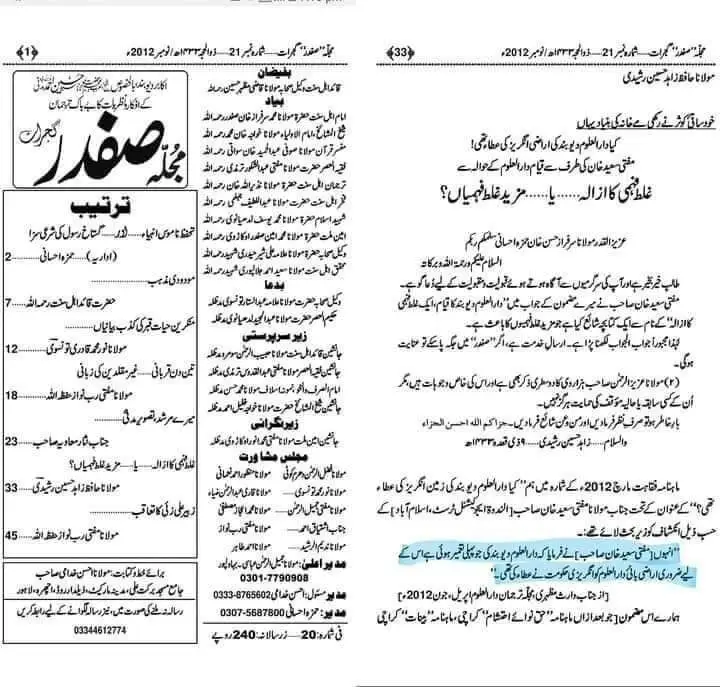
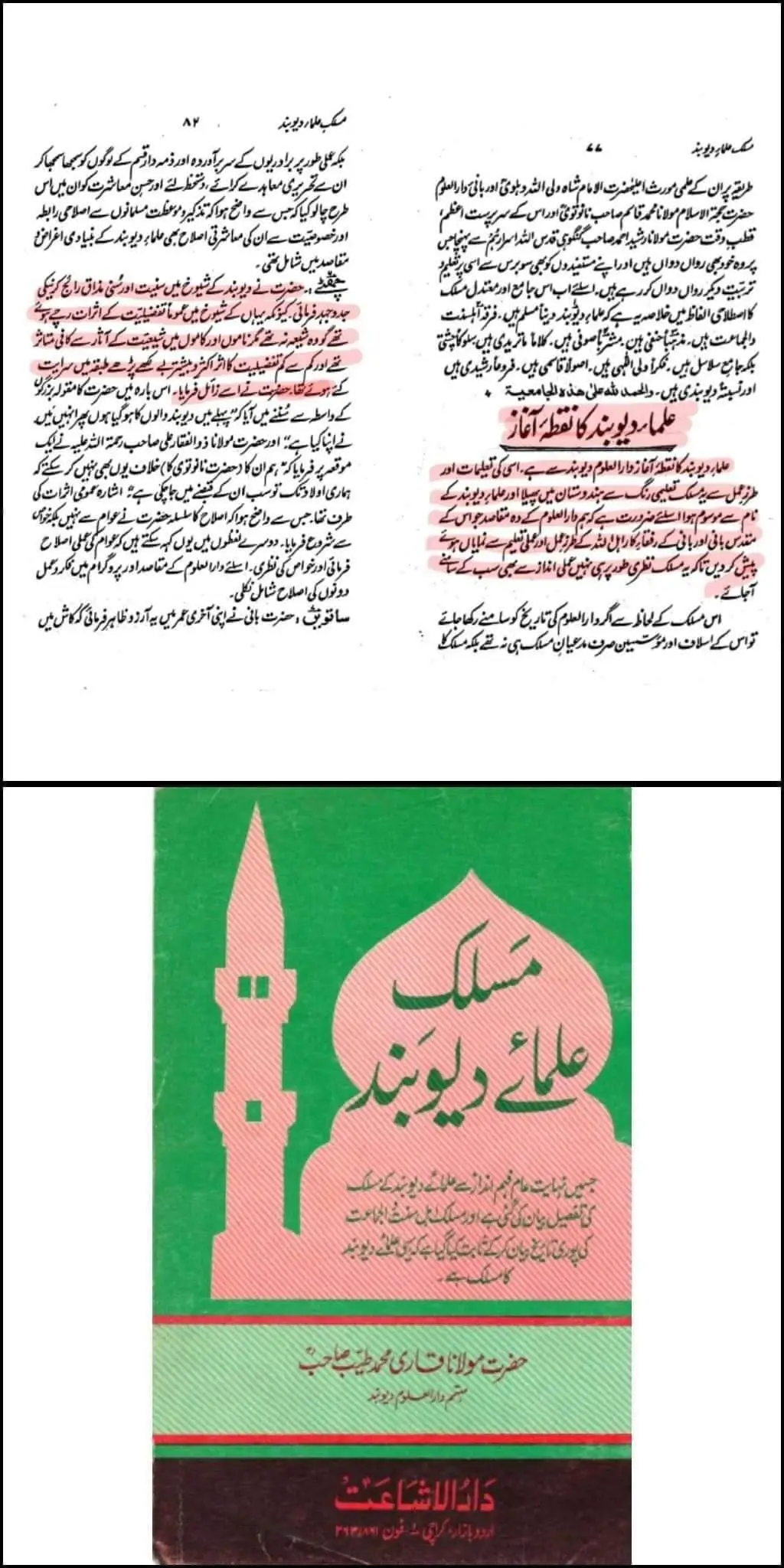
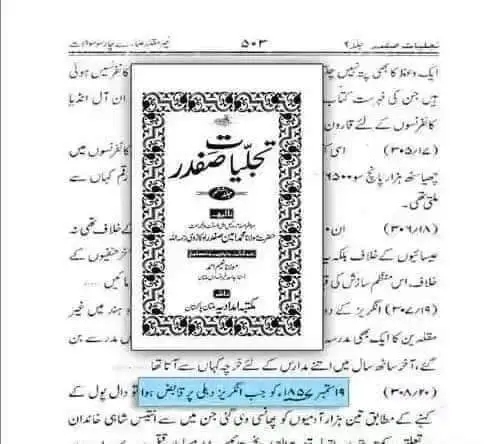
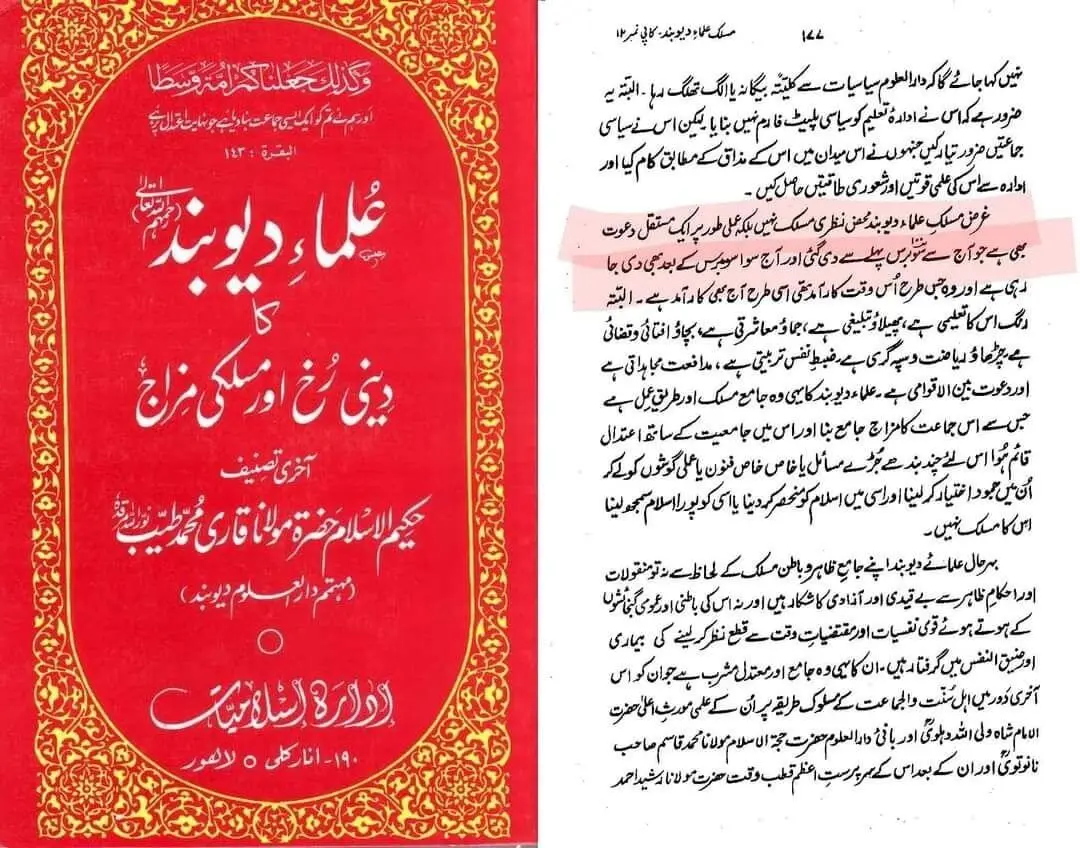
Similarly, the early scholars of Deobandism were influenced by Rafidi and Tafzili (those who consider Ali superior to other caliphs) beliefs. Qari Tayyib writes:
“The early scholars of Deoband had to strive to instill Sunni beliefs and attitudes because they were generally influenced by Tafziliyat (preference for Ali). Although they were not Shia, their words and actions were heavily influenced by Shia practices.”
This shows that the early scholars of Deoband were influenced by Rafidi and Tafzili beliefs, and efforts were made to instill Sunni attitudes among them.
Our open challenge to Deobandi scholars is to show us a single person in the history of Ahl-e-Sunnah before the British era whose beliefs and views align with those of Deobandis. If they can do so, we will publicly apologize for opposing Deobandis.
This is the sect that every Deobandi, big or small, is attached to. When cornered, they resort to the argument that Ahl-e-Hadith are a product of the British era. This is a sect that Deobandi masses have willingly embraced because they lack the ability to engage in scholarly debates with Ahl-e-Hadith.
The antiquity of any sect is determined not by its name but by its beliefs and views. The older the beliefs, the older the sect’s history. This is a fundamental principle.
Deobandis and Barelvis themselves emerged during the British era in India. Before the British, there was no trace of Deobandis or Barelvis in the world. The British, with their blessings, established the Deoband seminary in Deoband and launched Ahmad Raza Khan Barelvi in Bareilly.
However, both these sects claim to follow Imam Abu Hanifa, arguing that their history dates back to him. Similarly, Qadianis could also claim to be as old as Imam Abu Hanifa since they follow Hanafi jurisprudence.
But when it comes to Ahl-e-Hadith, Deobandi scholars deceive their followers by determining their history based on their name rather than their beliefs, claiming that the Ahl-e-Hadith sect did not exist in India before the British era.
This is the deceit of Deobandi scholars. The Ahl-e-Hadith sect’s beliefs and views are the same as those of the Sahaba (companions of the Prophet).
The beliefs of Ahl-e-Hadith regarding Allah’s attributes, the increase and decrease of faith, and other matters are the same as those of the Sahaba. Therefore, Ahl-e-Hadith trace their origins back to the era of the Sahaba because their beliefs align with theirs.
The Prophet (peace be upon him) said:
“The Jews split into 71 sects, the Christians into 72 sects, and my Ummah will split into 73 sects. All of them will be in Hell except one.” When asked which sect would be saved, he replied: “The one that follows the path I and my companions are on today.”
(Sunan Tirmidhi, Sunan Abu Dawood)
Another hadith states:
Muawiyah (may Allah be pleased with him) reported that the Prophet (peace be upon him) said:
“A group from my Ummah will always remain steadfast on the commandments of Allah. Those who oppose them or try to harm them will not succeed until the command of Allah (the Day of Judgment) arrives, and they will remain steadfast.”
(Sahih Muslim)
This hadith makes it clear that a group will remain steadfast from the time of the Prophet until the Day of Judgment. Therefore, sects that emerged centuries later cannot be this saved group.
Scholars of Hadith and the Ummah have identified this group as Ahl-e-Hadith. Among these scholars are Imam Ahmad ibn Hanbal, Imam Ali ibn al-Madini, Imam Bukhari, Imam Abdullah ibn Mubarak, Khatib al-Baghdadi, and others.
Pir Abdul Qadir Jilani also referred to this group as Ahl-e-Hadith.
Deobandi scholars often deceive their followers by claiming that Ahl-e-Hadith refers only to Muhaddithin (scholars of Hadith) and not ordinary people. However, Imam Ahmad ibn Hanbal and Imam Ibn Taymiyyah clarified that Ahl-e-Hadith includes anyone who follows the Hadith, whether a scholar or a common person.
Pir Abdul Qadir Jilani said:
“Innovators label Ahl-e-Sunnah with various names, but they have only one name: Ahl-e-Hadith.”
(Ghunyat al-Talibin)
The evidence that Darul Uloom Deoband was built with Hindu funds is also present. Deobandi scholar Ahsan Gilani lists Hindu donors who contributed to the Deoband seminary, including Munshi Tulsi Ram, Ram Sahay, Munshi Hardwarilal, Lala Bednath, Pandit Shriram, Munshi Motilal, Ramlal, and Siva Ram Sawar, among others.
Books against Ahl-e-Hadith were also provided by Hindu publishers. Ahsan Gilani writes:
“In 1287 Hijri, many generous people donated valuable books to the seminary. Specifically, Munshi Naval Kishore, the owner of a printing press in Lucknow, contributed significantly despite the distance.”
Deobandi scholars used these books to write against Ahl-e-Hadith, showing how dangerous they are to Islam.
Furthermore, if a Hindu visited the Deoband seminary, senior Deobandi scholars would massage their feet. Thaanvi narrated that Maulvi Mahmud Rampuri once visited Deoband with a Hindu. The Hindu stayed with Mahmudul Hasan Deobandi, who massaged his feet while he slept. When Mahmud offered to do it instead, Hasan refused, saying, “He is my guest; I will serve him myself.”
Deobandi elders served Hindus in this manner because Hindus had supported them against Ahl-e-Hadith. Even today, you will not find a Deobandi scholar opposing Hindus.
After all this, if we do not call them “Deobandi Pandits,” what should we call them? The ones running the Deobandi religion are essentially pandits. Deobandism was included in the Muslim Ummah to sever people’s connection with Allah and His Messenger and make them followers of Deobandi pandits. They have been quite successful in this endeavor.
No Deobandi can be associated with any Islamic symbol. In beliefs, they are Maturidi; in jurisprudence, they are Hanafi; in Sufism, they follow Chishti, Qadri, Suhrawardi, and Naqshbandi orders. You will not find any Islamic identity in the Deobandi pandits’ religion. Their entire identity is based on misguidance. In this way, they have diverted the Muslim Ummah from Allah’s path and forced them to bow before others, leading them astray from the Prophet’s path.
By: Fuzail Siddiqui